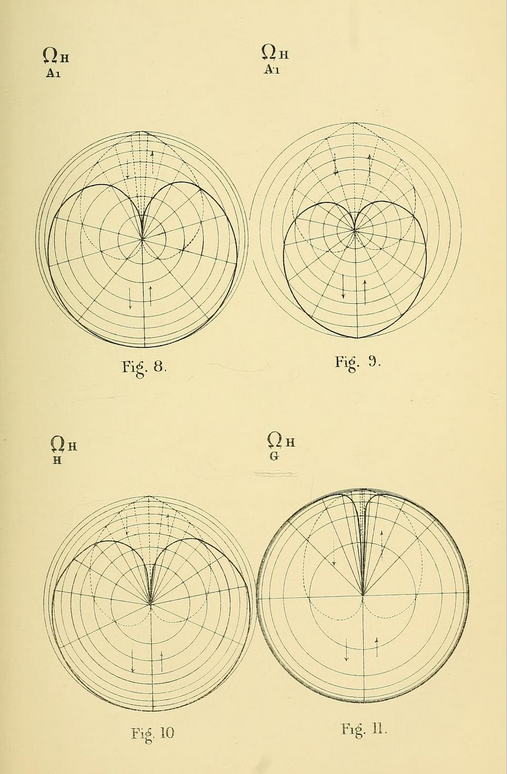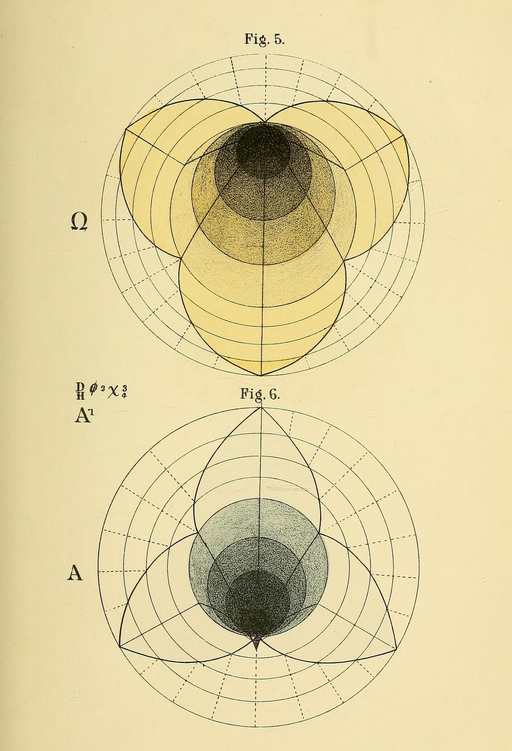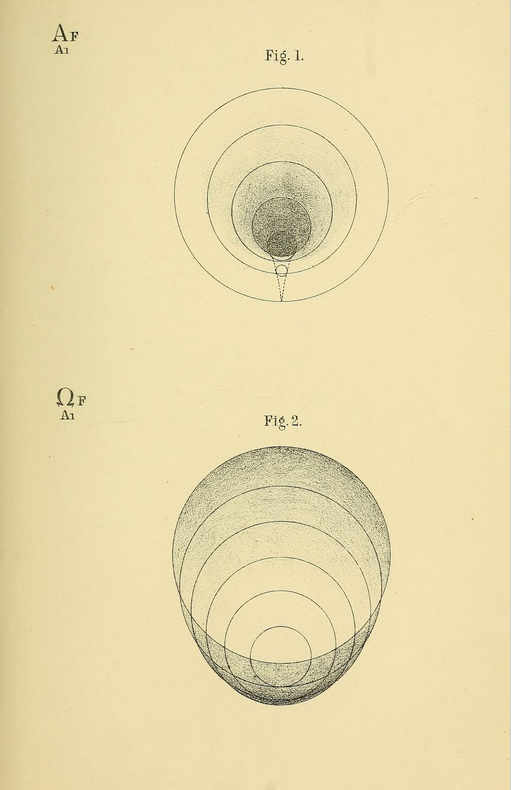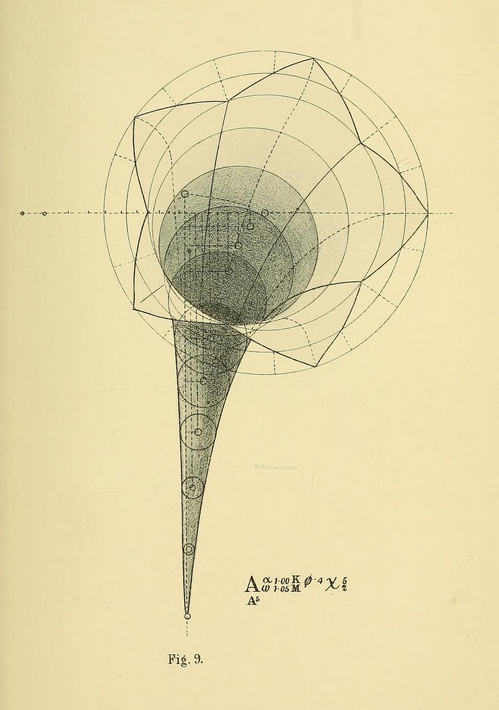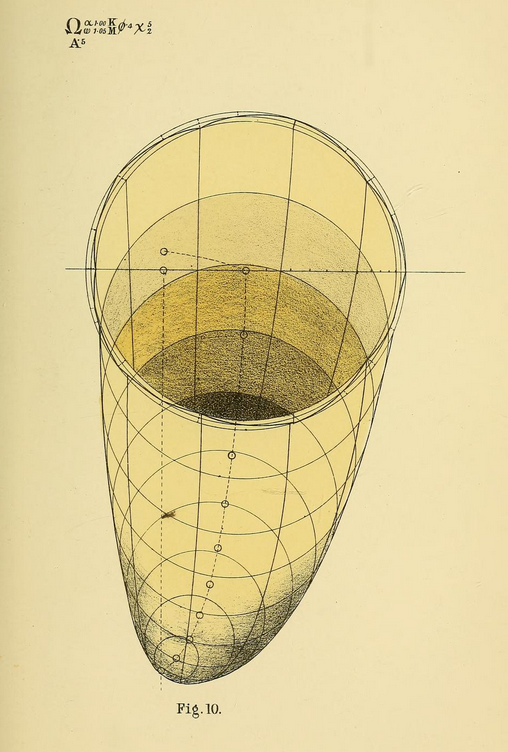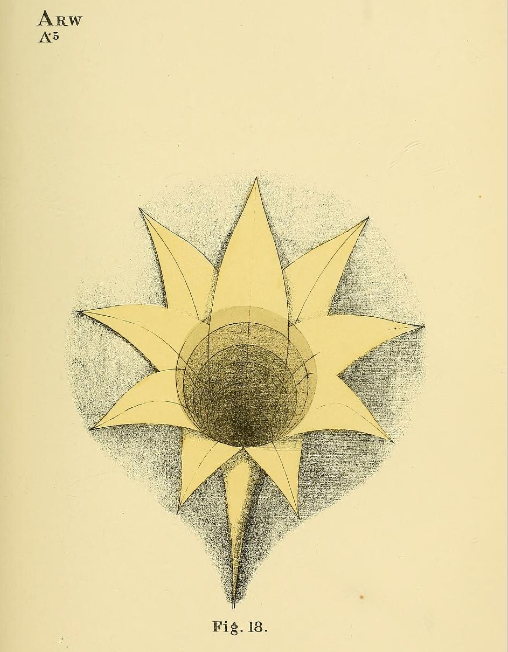Extracts from Geometrical psychology, or, The science of representation by Louisa S. Cook. Geometrical psychology, or, The science of representation an abstract of the theories and diagrams of B. W. Betts, by Louisa S. Cook. Published 1887 by G. Redway in London.
Benjamin Betts was fascinated by numbers: could mathematics answer the questions of why we are here, and where and what here is?
The book begins:
The diagrams which are considered in the following pages are the work of Mr. Benjamin Betts, of Auckland, New Zealand.
Mr. Betts has spent more than twenty years in studying the evolution of Man. He contemplates Man, not from the physical, but from the metaphysical point of view ; thus the evolution of Man is for him the evolution of human consciousness. He attempts to represent the successive stages of this evolution by means of symbolical mathematical forms. These forms represent the course of development of human consciousness from the animal basis, the pure sense-
conseiousness, to the spiritual or divine consciousness ; both which extremes are not man — the one underlying, the other transcending the limits of human evolution.Mr. Betts felt that consciousness is the only fact that we can study directly, since all other objects of knowledge must be perceived through consciousness.
Mathematical form, he considers, is the first reflection and most pure image of our subjective activity. Then follows number, having a close relation to linear conception. Hence mathematical form with number supplies the fittest symbols for what Mr. Betts calls ” The Science of Representation,” the orderly representation by a system of symbolisation of the spiritual evolution of life, plane after plaoe. “Number,” Philo said, ” is the mediator between the corporeal and the incorporeal.”
It may be objected that we have already a system of word-symbols for the purpose of Representation, and that therefore a system of linear mathematical symbols is superfluous. But words are inexact, arbitrary, uncertain, and especially so for the expression of metaphysical ideas. Such words as substance, essence, passion, are used in quite contrary senses by different people, or by the same person at different times. Mathematics is par excellence the exact science, and mathematical symbols cannot be loosely applied ; they must be in strict correspondence with the thing signified, since otherwise the mind rejects them. But a true symbol when once the inner meaning is perceived is felt to be necessary, exact, satisfying. It can stand for that and nothing else or rather only that and whatever else is merely the repetition of it on a different plane. Naturally mathematical diagrams are not capable of such wide and general application as words, but within their narrower limits they have greater depth, and they may be made of the greatest use in defining the meaning of scientific and metaphysical terms. At least it must be granted that thought is stimulated and enriched by the development of an additional mode of expression.
The symbolic forms which Mr. Betts has evolved through his system of Representation resemble, when developed in two dimensions, conventionalised but very scientifically and beautifully conventionalised leaf- outlines. When in more than two dimensions they approximate to the forms of flowers and crystals…
Since Being must exist and can only be manifested in the finite through infinite variation, there must necessarily be in every man some disproportion between his alpha and omega activities, whether of perception or imagination. This disproportion at first leads a man on unconsciously, as he thinks to experience yet greater delight with each new fruition of desire. But as his desires expand, and their gratification is increasingly difficult, the disproportion becomes a conscious element in his existence. A thrill of unsatisfaction accompanies every determination of activity, even the most pleasurable, impelling to the continued search in new directions for new and more perfect means of self-gratification, only to be proved in their turn equally unsatisfying.
” To make one shoeblack happy …. would require, if you consider it,” says Carlyle, “for his permanent satisfaction and saturation, simply this allotment, no more and no less — God’s infinite universe altogether to himself, therein to enjoy infinitely, and fill every wish as fast as it rose …. always there is a black spot in the sunshine ; it is even, as I said, the shadow of ourselves.”
Via The US Archive and Maria Popova
Would you like to support Flashbak?
Please consider making a donation to our site. We don't want to rely on ads to bring you the best of visual culture. You can also support us by signing up to our Mailing List. And you can also follow us on Facebook, Instagram and Twitter. For great art and culture delivered to your door, visit our shop.


